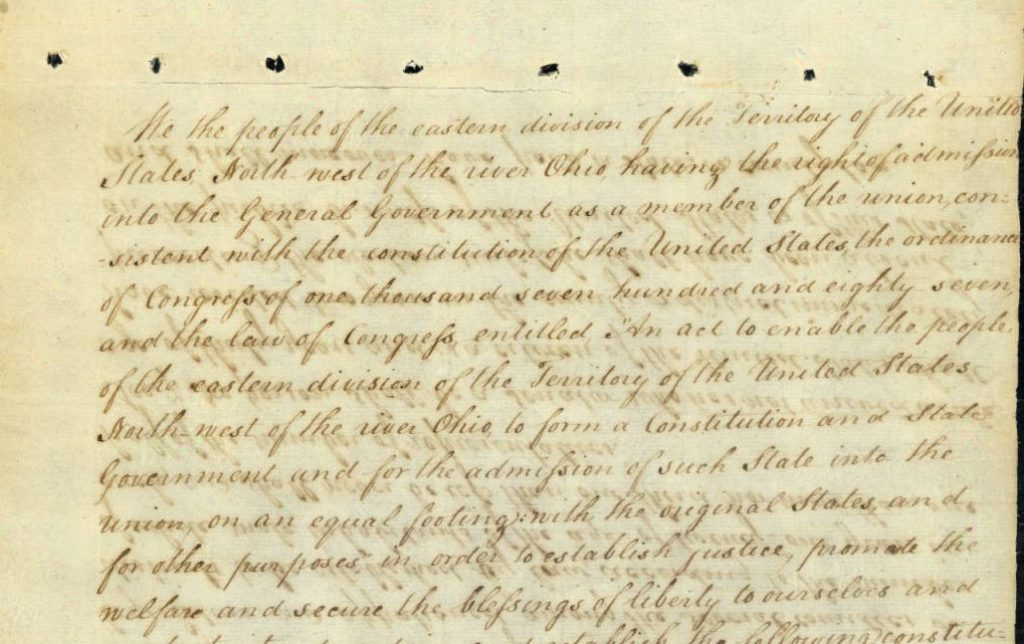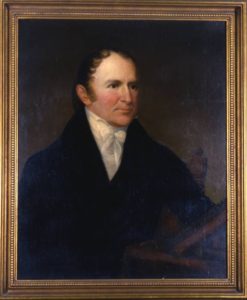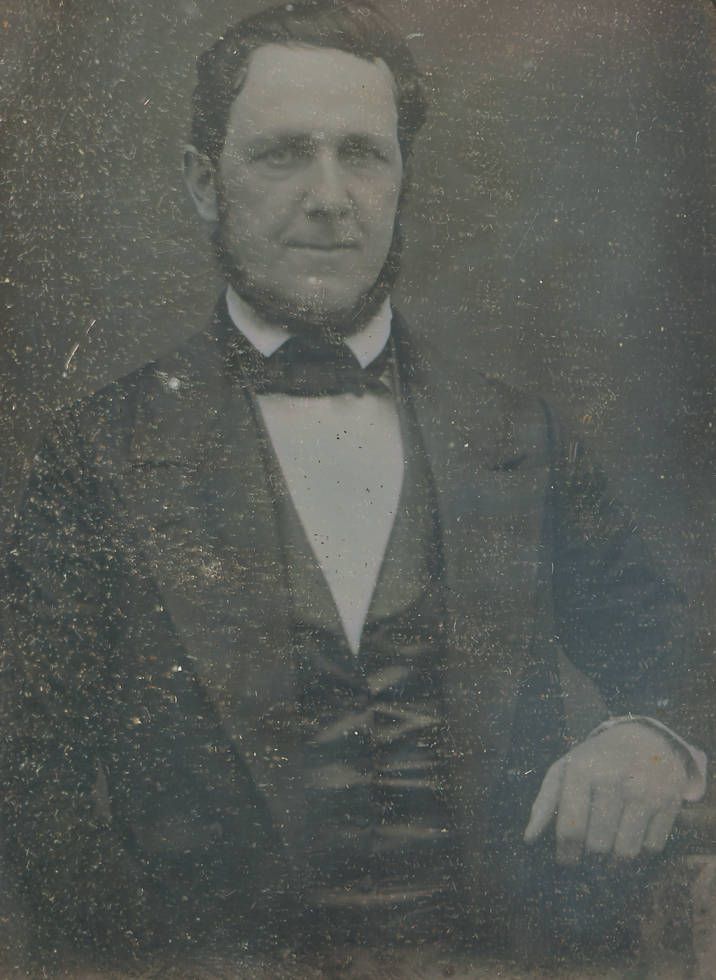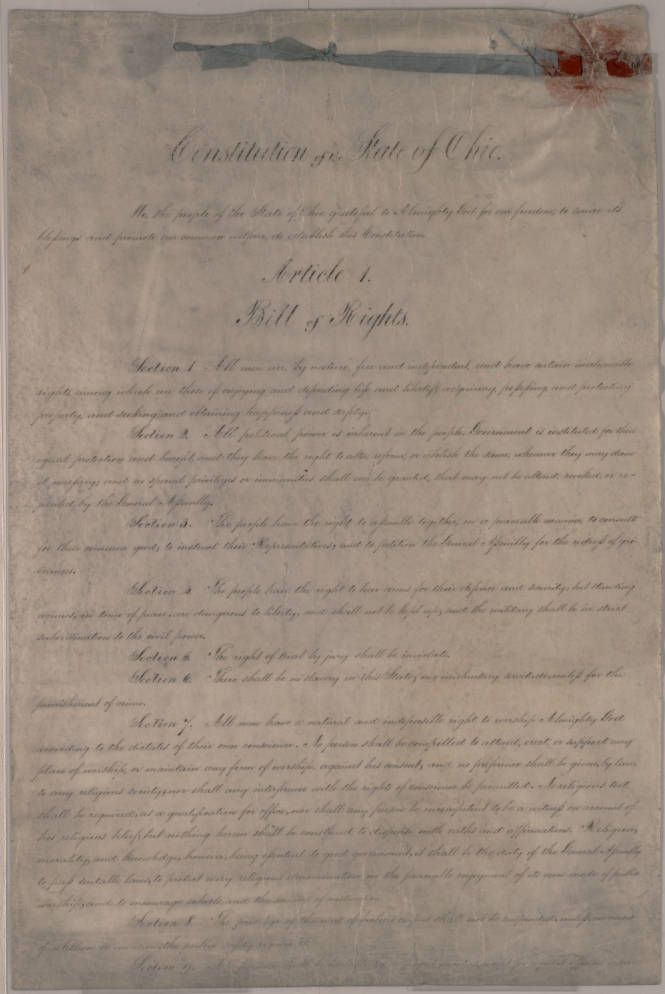We the People: The Ohio Constitution of 1851

This month marks the anniversary of the Ohio Constitution of 1851. Although it has been amended during the past century and a half, this document still governs the state today.

Ohio’s first constitution, seen above, was drafted in 1802 as one of the prerequisite steps for statehood. In November of that year, thirty-five delegates met at a constitutional convention to craft the government of the soon-to-be state. Because a majority of the delegates were Democratic-Republicans who favored a small government with limited powers, they created a governor with limited appointment power and no veto ability. The General Assembly held most of the power, including unlimited terms in office, broad appointment power (including all judges except justices of the peace), and the ability to create new counties. Although the constitution prohibited slavery, delegates rejected African American suffrage by one vote; only white men who paid taxes could cast ballots. Thomas Worthington personally carried the finished document to Washington, D.C. After receiving the approval of Congress and President Thomas Jefferson, Ohio officially became a state on February 19, 1803.
Over time, dissatisfaction with the original constitution grew. Initial concerns were based on judicial caseload; the 1803 Constitution required Ohio Supreme Court justices to hold court annually in each county. At that time Ohio had nine counties and a population of fewer than 45,000 people, but by 1850, Ohio was the third largest state in the U.S. with 87 counties and nearly 2 million inhabitants.

Financial crises, starting with the Panic of 1837, also caused voters to lose trust in the legislature and the broad powers granted to its members by the original constitution. Concerns included excessive taxation, mounting state debt, gerrymandering (the manipulation of political district boundaries to favor one party), and widespread political favoritism in the granting of corporate charters. Despite popular support for reform, the General Assembly failed to approve constitutional convention calls in 1844, 1846, and 1847. Finally, in 1849, the legislature reached the required two-thirds majority that allowed them to put the call for a constitutional convention before voters, who approved the measure.
Delegates were elected and met at the Ohio Statehouse in Columbus on May 6, 1850. (The convention adjourned in July due to a cholera epidemic and re-convened in Cincinnati between December 1850, and March 1851.) William Medill, who became Ohio’s 22nd governor two years later, served as the convention’s president.
The proposed constitution addressed several concerns about the 1803 version:
- It expanded the governor’s power (although it did not give the governor veto power) and created the position of lieutenant governor.
- It imposed substantive and procedural restrictions on the General Assembly. For example, it limited the legislature’s ability to incur debt and prohibited the creation of new counties without the residents’ consent.
- It gave voters the power to elect the auditor, secretary of state, treasurer, attorney general, Ohio Supreme Court justices, and common pleas judges—all of whom had been previously appointed by the legislature.
- It added district courts throughout the state (above common pleas courts but below the Ohio Supreme Court) to help deal with the judicial caseload.

The constitution did not expand suffrage; voting was still limited to white male citizens. However, it did give those voters more options for amending the constitution in the future. A new provision was introduced that automatically put a convention call on the ballot every twenty years, so each generation had a chance to revisit the constitution. The General Assembly could propose constitutional amendments to voters by a three-fifths majority, and all amendments proposed by future constitutional conventions were required to go to the voters for approval.
The proposed constitution was approved by voters on June 17, 1851, and became effective on September 1 of that year. Two additional constitutional conventions have been held since 1851; however, the constitution created during the convention of 1873-74 was rejected by voters, and the convention of 1912 sent amendments to the voters instead of a new constitution. Although the 1851 Constitution has been amended 169 times since its creation, it is remarkably long-lived; only six states have constitutions that are older.
Thank you to Stephanie Michaels, Research and Catalog Services Librarian at theState Library of Ohio, for this week’s post!



Leave a Reply
You must be logged in to post a comment.